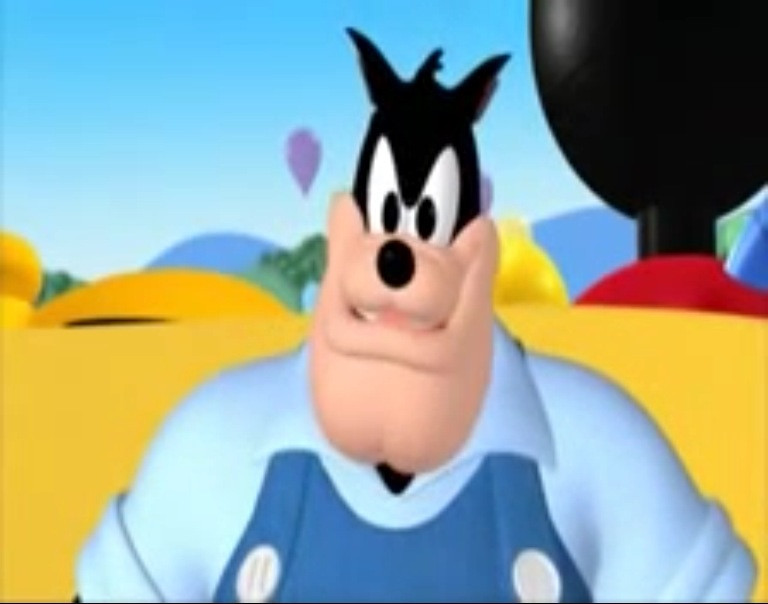Disney has created a treasure trove of beloved characters, from the universally adored Mickey Mouse to a cast of unforgettable heroes and villains. Among these, Pete, often dubbed “Pete the Cat,” stands out as a particularly enduring antagonist, especially in the context of Mickey Mouse’s world. While Mickey embodies wholesome goodness and optimism, Pete represents the mischievous, often troublesome, side of Disney’s animated universe. This contrast, deeply embedded in Disney history, makes the dynamic between Pete the Cat and Mickey Mouse a fascinating study in character design and storytelling. Let’s delve into why Pete, despite being a “bad cat,” holds a unique and important place in Disney’s legacy, particularly when viewed alongside the iconic Mickey Mouse.
From Bear to Cat: The Evolution of Pete, Disney’s Oldest Character
Interestingly, Pete wasn’t always envisioned as a cat. Originating in 1925, Pete predates even Mickey Mouse, making him Disney’s oldest continuously appearing character. Initially, he was conceived as a bear, and this burly, somewhat brutish design aesthetic carried over even after his transformation into a cat. This early version of Pete was indeed more bearlike in stature and demeanor, fitting the role of a classic cartoon heavy.
It was only later, after Mickey Mouse’s groundbreaking debut in 1928, that Disney reimagined Pete as a cat. This shift was likely strategic, aiming to create a more visually and thematically suitable foil for the smaller, more nimble Mickey Mouse. A cat, even a large one like Pete, offered a different kind of threat and dynamic compared to a bear, aligning better with the developing world of Mickey and his friends. This transition solidified Pete’s role as a recurring antagonist, a thorn in the side of Mickey and his companions for decades to come.
 Pete
Pete
Image of Pete “the cat” from Disney, highlighting his classic villainous design.
Pete’s Antagonistic Role in Mickey Mouse Clubhouse and Beyond
Pete’s character shines (or perhaps, schemes) particularly brightly in Disney Junior’s Mickey Mouse Clubhouse. Designed for preschool audiences, the show presents simplified narratives where Mickey and friends solve problems with the help of a magical toolbox, Toodles. However, even in this educational context, Pete retains his troublemaking essence.
In many Mickey Mouse Clubhouse episodes, Pete appears as a minor obstacle, often creating humorous inconveniences for Mickey and the gang. He might set up a tollbooth on their path, demanding beans or marbles – the currency of Mickey’s world – for passage. While these scenarios are lighthearted, they subtly introduce children to the concept of an antagonist, a character who creates challenges and sometimes acts selfishly. Pete’s actions, though never truly malicious in Mickey Mouse Clubhouse, consistently disrupt the protagonists’ plans and highlight his self-serving nature.
This portrayal, while softened for a younger audience, echoes Pete’s broader role across Disney animation. Whether he’s Peg-Leg Pete, Sneaky Pete, or simply Pete “the cat,” he consistently embodies the archetype of the lovable rogue – a villain who is more comical nuisance than genuine threat. He’s the character who cuts corners, tries to cheat, and generally makes life a little more difficult for the heroes, providing comedic conflict and opportunities for Mickey and friends to demonstrate their problem-solving skills and moral fortitude.
Why Pete’s “Bad Cat” Persona is Essential to Disney’s World
While Mickey Mouse embodies unwavering positivity and acts as a moral compass, Pete provides a necessary contrast. Without characters like Pete, the Disney universe might risk becoming overly saccharine and lacking in relatable conflict. Pete’s flaws – his laziness, his greed, and his occasional grumpiness – make him surprisingly relatable, even endearing in a villainous way.
He’s not a purely evil villain seeking world domination. Instead, Pete’s villainy is often petty and opportunistic. He’s in it for personal gain, whether it’s a few beans or a moment of mischievous fun at someone else’s expense. This lower-stakes antagonism is crucial for children’s entertainment. It presents conflict in a manageable, understandable way, allowing young viewers to grasp the difference between right and wrong without being exposed to truly frightening scenarios.
Furthermore, Pete’s consistent presence reinforces Mickey’s heroic qualities. Mickey’s patience, kindness, and problem-solving skills are constantly highlighted in contrast to Pete’s selfish antics. This dynamic teaches valuable lessons about conflict resolution, fairness, and the importance of staying true to one’s values, even when faced with frustrating characters like Pete. In essence, Pete the Cat, the “worst cat ever” in jest, actually plays a vital role in making Mickey Mouse and his world so engaging and morally instructive. He is the perfectly imperfect foil to Disney’s perfect mouse.
